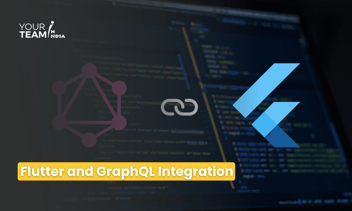Quick Summary: This comprehensive guide for Angular developers delves into the essentials of GraphQL. Learn key concepts, advantages, and practical examples to implement GraphQL in your Angular applications, enhancing your data querying efficiency and overall application performance.
Introduction
GraphQL is a powerful query language for APIs and a runtime for executing those queries. It provides a more efficient and flexible alternative to REST, allowing clients to request exactly what they need and nothing more.
In web development, data fetching is a critical aspect that can significantly affect an application's performance and user experience. REST has been the traditional way to communicate between the client and server, but it comes with certain limitations, such as data over-fetching and under-fetching. GraphQL, a query language for your API developed by Facebook, addresses these issues by allowing clients to request exactly the data they need.
Angular is a platform and framework for building client-side applications using HTML, CSS, and JavaScript/TypeScript. Combining Angular with GraphQL allows developers to build highly interactive and data-driven applications.
Prerequisites
Before diving in, ensure you have the following:
- Node.js and npm installed
- Angular CLI installed
- Basic knowledge of Angular and GraphQL
Setting Up the Angular Project
First, create a new Angular project:
Installing GraphQL and Apollo Client
Apollo Client is a popular GraphQL client that integrates well with Angular. Install the necessary packages:
Setting Up Apollo Client
Create a new file 'apollo.config.ts' in the 'src' directory to configure Apollo Client:
Configuring Apollo in Angular
Next, integrate Apollo Client with Angular. Update 'app.module.ts':
Defining a GraphQL Query
Create a new service to handle GraphQL queries. For example, create 'user.service.ts':
Using the Service in a Component
Update the 'app.component.ts' to fetch and display data:
Running the Application
Ensure your GraphQL server is running and configured properly. Then, start the Angular application:
Navigate to http://localhost:4200 in your browser to see the list of users fetched from your GraphQL server.
Advantages
- Efficient Data Fetching:
Precise Queries: GraphQL allows clients to request only the data they need, reducing over-fetching and under-fetching compared to REST.
Batching and Caching: Tools like Apollo Client can batch multiple queries into a single request and cache responses for improved performance.
- Strongly Typed Schema:
Validation and Autocomplete: GraphQL's type system enables better validation and IDE features like autocomplete, making development more efficient and reducing errors.
- Flexibility:
Single Endpoint: GraphQL provides a single endpoint for all queries, simplifying API management and reducing the complexity of multiple REST endpoints.
Schema Evolution: It’s easier to evolve APIs without versioning. New fields can be added without affecting existing queries.
- Better Tooling:
Development Tools: Tools like GraphiQL and Apollo DevTools provide powerful debugging and inspection capabilities.
- Real-time Data:
Subscriptions: GraphQL supports real-time updates through subscriptions, which can be beneficial for applications requiring live data updates.
Disadvantages
- Complexity:
Initial Setup: Setting up a GraphQL server and integrating it with Angular can be more complex than setting up a REST API.
Learning Curve: Developers need to learn GraphQL syntax and concepts, which can be a hurdle if the team is more familiar with REST.
- Overhead:
Query Planning: Writing complex queries requires careful planning to avoid performance issues, as deeply nested queries can lead to expensive server operations.
- Caching Challenges:
Custom Caching: Implementing caching can be more challenging compared to REST, where HTTP caching mechanisms are more straightforward and well-established.
- Tooling Limitations:
Maturity of Tools: While tools like Apollo are robust, the ecosystem around GraphQL is still maturing, and some features or integrations might not be as polished as those for REST.
- Security:
Complex Authorization: Implementing fine-grained authorization can be complex, especially with nested queries and various data fetching requirements.
Introspection Exposure: GraphQL introspection can expose the entire API schema, which might be a security concern if not properly managed.
Conclusion
Integrating GraphQL with Angular provides a powerful combination for building modern, efficient, and dynamic web applications. GraphQL's ability to fetch precisely the data required, combined with Angular's robust framework for building rich client-side interfaces, results in highly performant and scalable applications.
Advantages such as efficient data fetching, a strongly typed schema, flexibility with a single endpoint, enhanced tooling, and support for real-time data through subscriptions make GraphQL an attractive choice for Angular developers. These benefits lead to reduced data transfer, improved developer productivity, and a more streamlined client-server interaction.
However, GraphQL also comes with challenges. The initial setup can be more complex, there is a learning curve associated with its syntax and concepts, and handling caching and security requires careful planning. Despite these challenges, the benefits often outweigh the drawbacks, especially for applications that demand dynamic data interactions and real-time updates.
In conclusion, adopting GraphQL in an Angular application can significantly enhance the development experience and the application's performance. It requires an upfront investment in learning and setup, but the long-term gains in efficiency, flexibility, and maintainability make it a worthwhile consideration for modern web development projects. As the GraphQL ecosystem continues to mature, its integration with Angular is likely to become even more seamless and powerful.








